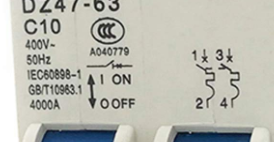Thanks for the video link, i was asking myself if thisGLC....This fellow says NEVER use that type of disconnect. He is quite adamant about it......I was using those CHINA breakers in a few other projects and I found about 70% either did not trip or tripped all the time......I stopped using them and only use ANL fuses now for protection in single wire architecture. But my understanding is that solar panels need both + and - protected per NEC Code....
Go to 5:16 minutes on the video for his reasons

Breaker was usable on the battery side, and found this thread while searching for the info. And while my question was not about PV breakers... your video answered my question... Those breakers seems to be rated for 24V max => No go.
Edit : Mmmm i can see they are 48V too...
Last edited:








